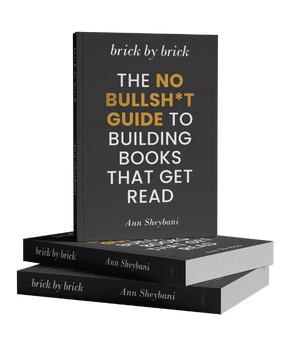I realize, after talking to a number of folks who want to write what they describe as a business memoir–what they really want to do is include a lot of personal narrative in a self-help book–that the average person has no idea what a memoir entails.
Years ago, I had the privilege of working with the author Anne Batterson at the East Hill Writers’ Workshop. She and I were part of a trio of writers (no one’s forgetting Sherry Horton) who taught craft. During one such class, Anne pulled out the following lesson to explain what constituted a memoir and what did not because it’s easy to get confused. Maybe you could benefit from this as well, particularly if you’ve been told that you should share your story.
A memoir is not an autobiography, which is a non-fiction account of someone’s life–usually famous or infamous–from birth to death told in the first person.
The autobiography focuses on the deeds, honors, events that made the person famous. Stylistically, there is often a lot more exposition, “telling,” and much less “showing” than in a memoir or personal essay. Rarely do autobiographies reach the levels of intimacy that are expected in memoir.
There are lots of theories about why memoir has become what many say is the signature genre of our time: personal isolation caused by the complicated and overwhelming ways that modern technology has changed our lives, political and social upheaval, and the unleashing of voyeuristic tendencies. Memoirist Gail Pemberton has suggested that “memoirs are like a bookshelf full of neighbors in a world where people have largely lost theirs.”
Whatever the cause of the memoir’s popularity, its open form is well suited to accommodate the complexities of modern life. In I Could tell you Stories: Sojourns in the Land of Memory, Patricia Hampl describes the possibilities of this kind of writing. “Memoirists, unlike fiction writers, do not want to tell a story. They want to tell it all—the all of personal experience, of consciousness itself. That includes a story, but also the whole expanding universe of sensation and thought that flows beyond the confines of narrative and proves every life to be not only an isolated story line but a bit of the cosmos, spinning and streaming into the great, ungraspable pattern of existence. Memoirists wish to tell their mind, not their story.”
This is a large order to be sure.
How is it done?
The answer is that memoir borrows from many other literary forms:
From fiction: stylistic techniques such as character development, scene setting, description, dialogue and flashback, and at times, the narrative structure.
From poetry: the use of images, symbols and metaphors, strategies to probe the ineffable aspects of existence, “the all of personal experience.” Just as a poet must find the perfect image or metaphor to connote a larger concept, a memoirist must choose specific details and moments that can, when assembled, convey the fullness of his or her experience.
From personal essay: an emphasis on voice. Phillip Lopate, who writes a great deal about personal essay, states, “intimacy is the hallmark of personal essay…that sense that the writer is speaking directly into the reader’s ear.” I will add that the only difference between a personal essayist and a memoirist is the length and scope of the work. One might say that memoir is a collection of personal essays organized within an appropriate structure.
The question of structure
Whereas autobiography uses the author’s life from birth onwards to structure the material, memoirists often use a particular period of time to contain the work. Ann Sheybani’s memoir-in-progress takes place in Iran during the years she lived there. What makes it a memoir rather than a non-fiction narrative, are the scenes from her past that she weaves into the story so that the reader can understand why she made the choices she made, what the stakes were, and how the trials she went through during those years changed her. Change provides the arc of a memoir.
Sherry Horton’s memoir, The Witness Chair is structured by the last year of her husband’s life, but the scenes from their forty years of marriage provides the spark that brings the narrative to life for us, makes us identify with her, makes us care what happens to both of them, makes the scope of the memoir universal and very moving.
Another member of our writers’ group used the family farm in Montana to organize her memoir, This Storied Land: A Montana Memoir (Pronghorn Press, 2004). The author had begun with a collection of four or five impressive personal essays about growing up on a farm in a remote part of Montana, but she didn’t know what to do with them. After reading them all, we told her what we were most interested in hearing more about: her strong but quiet father, the strict fundamentalist religion her family practiced, her love of books, etc. She then produced more essays and a story line began to emerge.
Thematic structures can be as varied as our lives.
In one of our advanced workshops, the themes that emerged were all worthy to explore: surviving abuse, generational conflict, the farm (which is place but also family), family secrets, growing up in an American/Italian Catholic family, the impact parents have on their children.
In Anne Batterson’s memoir, The Black Swan: Memory, Midlife and Migration (Scribner, 2001), a journey provides the narrative structure, the dominant metaphor, and a number of multi-layered themes.
At the narrative level, it is the story of a solo journey she made around the country in her vintage VW camper following the fall migration. It was an impulsive act based on nothing more that a hunch that the migrating birds had something to teach her about her own life.
In many ways, The Black Swan is a classical mythical journey, a kind of coming of age story, not of a starry-eyed youth entering adulthood, but that of a fifty-six year old woman struggling to come to terms with certain aging and certain death and the choices this confrontation presents. As you all know, the version of this story that is specifically American is “The Trip West.” We have always gone west to find ourselves.
And finally, the reader learns that this is going to be a journey that takes place in a much larger time frame: that of the migrating birds.
On a mythical level, the speaker represents anyone who is going through a major passage in life.On the universal level, the speaker becomes a player in the big picture–along with all living creatures.

